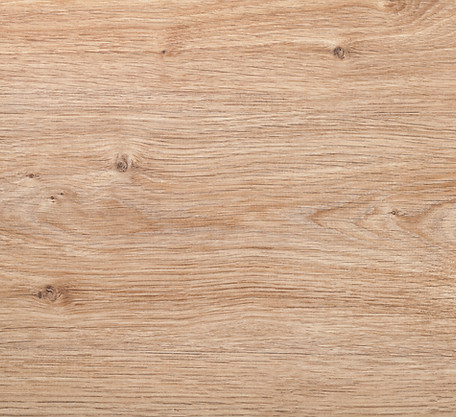
Carefully crafted

The Mind-Blowing History of the Macadamia Nuts
Popular as it seems, not many consumers are aware of the macadamia nuts' origin! It started all the way from the Eastern slopes of Australia's Great Dividing Range, where the Aboriginal Australians fed on a native evergreen tree which they call "Kindal Kindal". And that is the macadamia nut tree we all know today!
The macadamias were treated as a precious delicacy and were accordingly treasured whenever they were collected. Macadamia's normal life in secret hit a new milestone when the European botanists got attracted by the dignified beauty of the trees in the rainforests of Queensland. It was then renamed after a Scottish-Australian chemist and botanist John Macadam in 1857 and introduced to Hawaii where it was planted on the Big Island. For ages, Hawaii had been leading the chart of top macadamia producers worldwide until the market was outpaced by South Africa and Australia. Other than those, Brazil, Costa Rica, Kenya, Guatemala, New Zealand, and Malawi are known to own the largest macadamia nut farms.
How Do the Macadamia Nut Trees Grow?
The macadamia nut trees are only possible to grow in tropical and frost-free regions. Macadamia Integrifolia and Macadamia Tetraphylla are the only species of macadamia to be capable of producing edible nuts. These types of macadamia nut trees in Southern California and some subtropical areas outside America like Hawaii thrive when rainfalls are consistent. The macadamias can grow from 7 up to 40 feet tall with bushy and greenish foliage. However, macadamias are usually propagated from cutting, grafting, and budding and not started from the seeds. Why is that? Macadamia trees take up to 12 years to be considered “mature" from seeds. You definitely won't be waiting this long to harvest your nuts!
So how are macadamia nuts grown and is there any requirement to keep in mind? The macadamia tree grows best in a spacious area where sunlight is accessible and free of strong wind. It needs well-draining and deep soil to grow from young. A land with rich content of clay is not suitable. Perlite or sand is more suitable to maintain the pH level around 5 – 6.5 for the soil. Moist soil by frequent watering is a crucial factor to maintain the vitality of the macadamia tree from young to when the plant matures.
How are Macadamia Nuts Harvested?
The macadamia trees bear nuts in 4 to 5 years and it takes another 8 months to have the nuts ripen. To tell when the nuts ripen, touch the skin. If it's sticky, the nut is not ripe. You definitely don't want to pick the nut at this time. Another way to know is to check the color on the inside of the macadamia husk. The stunning chocolate brown is a good sign telling that it's time to start the harvest. Otherwise, when it's white, the nuts aren't ripe yet!
A common mistake that many people seem to make is shaking the trees when harvesting the ripe nuts. Even though it may save your time, shaking brings down a large number of unripe nuts as well. The best way to harvest macadamia nuts is to place a tarp evenly all around the ground beneath the tree. Once a ripe nut falls, it comes inside the tarp. For higher hanging nuts, use a long pole to dislodge.
How are Macadamia Nuts Processed?
The processing procedure of macadamia nuts requires 5 steps. These sections are crucial to producing crunchy and flavorful nuts.
Husking
Within a day or two after the nuts fall off, pick them up and remove the husks. The longer you leave the husk on, the harder it evolves and affects the color of the shell by creating mildew, which gives the kernel a musty taste.
Air Drying
The nuts need to be air-dried for at least 2 weeks after being harvested to lessen the moisture content and enhance the development of oil content. The best way to air dry macadamia nuts is to place them on the racks. This way allows a great deal of air to circulate the nuts thoroughly. The air drying system is carefully controlled to dry down the nuts from a 15 – 20% moisture to a 3.5% moisture content.
Cracking
The cracking process is designed to break down the hard shell without damaging the kernel by using a burst of compressed air. Plucking the kernel is the next step which features both electronic devices as well as hand sorting inspection. This step is critical to remove the poor quality kernel. Highly aware of macadamia's sensitivity with air and light, we minimize the exposing time of the kernels to the air and light within only 5 seconds. This rule is essential to preserve the original taste of the nuts from farm to table.
Packing
This is the final procedure where macadamia nuts are graded into "styles" from zero for "large whole kernel" to eight for chips and small pieces. Afterward, the kernel is vacuum-packed into foil-lined bags. This is when the macadamias are ready for distributing and stored in a climate-controlled warehouse.
Our favorites
Pre-cracked
in-shell macadamia
The Queensland - Originated nuts hail from the harmony of the EAST and the WEST. The natural and original taste is fully preserved from planning to harvesting, from grower's hand to yours, from land to hand.
Experiencing the finest taste of the world most
nutritious nuts becomes easier than ever!




naturally flavored macadamia
Macadamia nuts are freshly-taken out of its shell then roasted at the perfect temperature to keep the nutrients, its natural butter-like flavor, and creamy yet crunchy texture intact. Using 100% natural ingredients, our macadamia snack packs are your healthy choice of snack.


